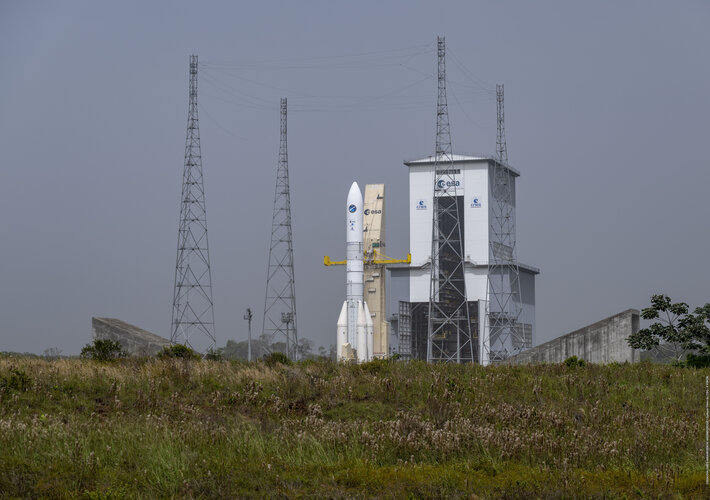
The test model that is now on the launch pad at Europe’s Spaceport in Kourou, French Guiana, stands 62 m high. It is exactly the same as the ‘production model’ Ariane 6 rockets that will soon be launched, except that its boosters do not need to be tested as part of the complete rocket, so the boosters are not fuelled.
To make way for launch, teams from ArianeGroup, France’s space agency CNES and ESA have started to remove the Ariane 6 test model by disconnecting the cables and fuel lines that pass through the launch tower.
On 30 January, the cryogenic connection system passed a last system test of the liftoff disconnection operations lines. The yellow arms seen here support the fuel lines that deliver liquid hydrogen and liquid oxygen to the upper stage to power the Vinci orbital engine – for this test there was no propellant in the fuel lines. Simultaneously at the bottom of the central core the connection system for the main stage also disconnected.
The connection system allows the free-standing launcher a clear ascent corridor on its way to space and protects the connection systems before the rocket engines’ plumes could damage it. The disconnection during the critical and complex dynamic liftoff phase must be executed in a strict timeline that has to happen with an accuracy of just a few milliseconds.



